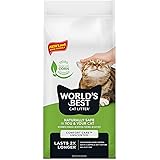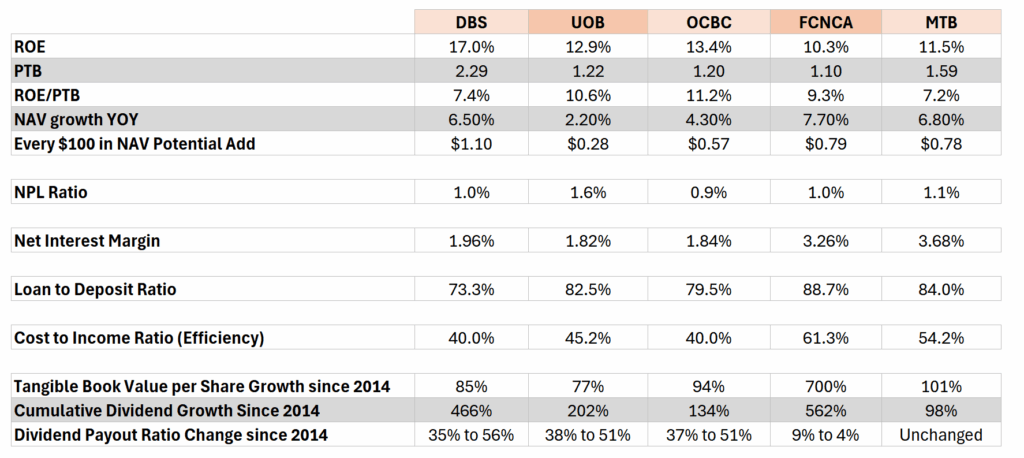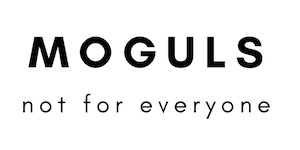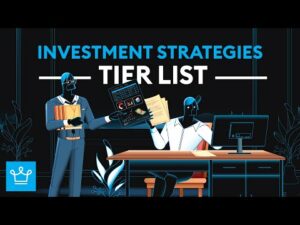The “Great Stall” Is Here—And Only the Sharpest Entrepreneurs Will Cash In While Others Freeze Up!
Ever feel like the housing market’s playing some kind of slow-motion game of freeze tag? Well, you’re not imagining things. It’s not gearing up for a fiery crash like 2008, nor is it sprinting toward another boom like we saw during the pandemic. Instead, we’re stepping into what I like to call the “Great Stall”—a weird, gray no-man’s land that’s unfamiliar territory for most Americans. It’s like the market’s caught in a holding pattern, prices barely budging while mortgage rates hang stubbornly high. So, what gives? Is this the calm before a storm—either a crash or a surge—or is this the new normal? And more importantly, how can savvy investors navigate this sluggish stretch without losing their shirts? I’m here to unpack the probabilities of each scenario and share the four crucial steps you need to capitalize on this unusual phase. Because, let’s face it, while today’s market feels stuck in neutral, the future holds golden opportunities for those prepared to pounce when the gears finally shift. Ready to figure out how to make the “Great Stall” work for you? LEARN MORE
The housing market is not going to crash tomorrow. It’s also not going to boom soon. We’re not in 2008, and we’re also not in 2020. We’re in a strange gray area, a zone that most Americans have never experienced before.
We’re entering the “Great Stall.” And this could last for years.
All data points to a new kind of housing market forming. But why, and why now? Is there any chance of a housing crash or home price explosion like before? Yes, but Dave is going to break down the odds of each scenario, plus what to do in the most likely scenario, while home prices stagnate and mortgage rates stay relatively high.
If you want to take advantage of the “Great Stall,” so that when home prices do go back up you’ll profit, there are four things you need to do. We’ll break down each step so you can prepare and pounce on the investment property that makes your future self wealthy.
The “Great Stall” is here, and when it’s over, millions of Americans will wish they had bought.
Click here to listen on Apple Podcasts.
Listen to the Podcast Here
Read the Transcript Here
Dave:
What’s going to happen in the housing market? I wish I could tell you for certain, but I don’t have a crystal ball, but I have been analyzing the real estate market professionally for a decade and I’ve looked at all the recent data, home prices, mortgage rates, inflation, unemployment and more. And what I can tell you are the potential paths the housing market could follow, real estate could crash, it could melt up. We could continue the current great stall dynamic. There could be a Black Swan event and you can make money investing in any of these potential future housing markets, but you need to take the right steps to prepare yourself today. So in this episode, I’ll project which of these real estate markets I think are the most and least likely to happen, and then I’ll give you my best advice for how to adjust your portfolio before they take place.
Hey everyone, welcome to the BiggerPockets podcast. I’m Dave Meyer, real estate investor, housing analyst, and today on the show we’re getting into the question that is on everyone’s mind. What is going to happen with the housing market as investors? The answer to this question is pretty critical, right? Not because you can’t invest in any of these scenarios, but because the strategies that you use should be based at least partially on what is happening in the larger housing market. This episode is about helping you understand the direction of the market so you can plan accordingly. And I think right up front we need to get the big important elephant in the room out of the way. As we start this episode, I do not know what is going to happen. I have spent a decade studying the housing market. I look at data every single day and I’m still not sure what comes next.
We are at a fork in the road and it’s not clear which path we’re going to take, but what I can help you all do is understand the different paths and where they lead. I can help you understand which path is most likely and it can help you build a strategy that is designed to withstand the uncertain period we’re in and that will thrive regardless of which path we actually ultimately wind up going down. So in today’s episode, what I’m going to go through is first my overarching take on the housing market and the most important variables. Everyone’s talking about all these different things, but what are the most important variables that will determine the direction of the housing market? Next, I’ll talk about the three, or actually maybe even four. There’s kind of a bonus scenarios that could happen in the housing market. Then I’ll share what I think the most likely path is and lastly, how at least personally I’m planning to invest and some advice for everyone going forward.
Now, I know that things are unclear right now and this episode is designed to help you make sense of it all. And if you like this type of episode, please let us know. Comment on YouTube or Spotify if you want more information on how to navigate the current market and questions that you have that we can answer for you in further episodes. With that, let’s jump into it. I’m going to start today by just talking about my big picture hypothesis, my thesis about what is going on in the housing market. And honestly, it hasn’t changed much over the last couple of years. When interest rates started going up in 2022, I started saying that I think housing affordability is the number one variable that we need to be looking at when we’re trying to understand where housing prices are going, where housing volume is going, where certain types of investing returns.
Certain strategy success are really going to depend on this one critical variable which is affordability. Because affordability is one of these magic variables in the housing market in that it drives both supply and demand. It drives demand in that there are a lot of people who want to buy houses, but affordability dictates who is actually able to buy those houses. And it also actually dictates supply because people who can’t afford to buy a new home are more hesitant to sell their existing home. And so in this episode, when I talk about the different paths for the housing market, a lot of what I’m talking about is going to be based on affordability. That’s sort of the crux of my hypothesis about the housing market. And just to extrapolate on that a little bit more, I think that affordability needs to improve and affordability is just a measure of how easily the average American can afford the average price home in the United States.
And if you look at that question, it hasn’t been worse than it is right now for about 40 years. The last time we saw affordability, this poor was in the early 1980s, and so I believe we’ve sort of just hit this wall in terms of affordability and we need it to come back down. Now, I know there are a lot of people out there, analysts, social media types who are saying that housing has to crash 50% to get affordability back to the long-term average or where it was in the nineties or something like that. I personally don’t believe that. I believe we’re in a new paradigm where housing is going to be less affordable than it was in the past because we have a housing shortage, but I do think affordability needs to improve. Now, there are a couple ways that can happen. Some people point to a crash, but affordability is actually made up of three sort of sub variables here.
It’s wages, how much people are earning its prices, the price of homes and its mortgage rates because the majority of people who buy properties in the United States, still about 80% of home purchases are made with a mortgage. So mortgage rates really matter. And so I’ve been saying this for years, I still believe this to be true. Keep this in mind as we go through this episode. That affordability needs to come down either by wages going up, prices coming down, mortgage rates coming down, or some combination or two or three of those variables. That’s been my hypothesis for the last three years and so far it has proven correct, but given the state of the economy, I need to add sort of a new element to my theory of the housing market. We need a new variable and to me that’s going to be the unemployment rate or some metric of the labor market if you prefer one, another one, but I’m going to use the unemployment rate as a proxy for the whole labor market right now because no matter how you look at the labor market, it’s getting worse, right?
We’re seeing job growth slowing. That’s because of a lot of different things, but we’re at just a late point in the tightening cycle, so that’s likely to happen. Recessions are a normal part of the economic cycle, so these kinds of increases in unemployment just happen periodically in our economy. We also have the huge variable X factor here, which is ai. We don’t really know how that’s going to ripple through the economy, and I think this is something that’s going to be important for the housing market because as I said before, affordability really matters. But if you have great affordability in the housing market because no one is employed and no one can realistically act on this affordability, that’s not good for the market. So we need these two things to go together. We need affordability to improve and we need the labor market to stay relatively good that it can’t get a little bit worse, but it can’t be a disaster where we see unemployment at eight, nine, 10% that would not be good for the housing market.
Those are the two variables we’re going to focus on. Are there other variables that will impact the housing market? Of course, right? Demographic factors. The fact that boomers are aging and own a lot of real estate, we are looking at inventory trends, we look at building trends, migration patterns, all of this stuff does matter, but they’re relatively small variables compared to affordability and the labor market. And so that’s what I’m going to focus on for today’s episode. So let’s extrapolate that. Let’s go one step further here and talk about if we’re looking at affordability and we’re looking at the labor market, what could happen? What are the different scenarios this could play out? I have three and a half for you. The first one is the one that seems to be on everyone’s mind, which is a crash. Could the housing market actually crash again?
Yes, it could. It definitely could. Is it the most likely scenario? We’ll look at that in just a minute, but is there a scenario when we look at affordability in the labor market that could play out in the next few years where the housing market crashes? Yes, and it would happen in a scenario where affordability stays low, right? We don’t get an improvement in rates. Prices stay stubborn, wages stagnate, right? Affordability stays low and unemployment goes up. Those are the two things that we would need to happen. This is actually what we would call stagflation, right? We would keep mortgage rates high likely because inflation starts going up. We are not out of the woods in terms of inflation. It’s been going up the last four months in a row, and so we have to keep a close eye on that. So inflation going up, reasonable scenario, right?
At the same time, unemployment could go down and create distress in the market. People going to delinquent on their mortgages, foreclosure starting to go up. Those are the two things that would need to happen at the same time to get a full on crash. So this is a scenario that I could see happening in the next couple of years. If inflation’s going up and the labor market’s getting worse, it’s pretty hard to say that this is impossible, but is it likely? We’ll get to that and are other possible scenarios right after this quick break. This week’s bigger news is brought to you by the Fundrise Flagship fund, invest in private market real estate with the Fundrise flagship fund. Check out fundrise.com/pockets to learn more.
Welcome back to the BiggerPockets podcast. I’m Dave Meyer talking about the possible directions we should be going in the housing market, which one I think is the most likely and how to navigate it as an investor. We just talked about scenario one, which is a crash. Scenario two is sort of the opposite of a crash. It’s what I would call a melt up where we see rapid price acceleration in the housing market similar to what we saw during COVID. Could this happen? Yeah, there’s definitely scenario when we talk about our key variables here that could happen and it comes with rapidly improving affordability, basically a recession without inflation, that could definitely bring down mortgage rates. This is what normally happens during a recession. Mortgage rates are dictated by the bond market and when there’s a recession bond markets for all sort of reasons, they get a lot of demand that pushes down bond yields and it takes mortgage rates down with them.
And that could happen, right? If we see AI really disrupt the labor market or something else just breaks in the economy, we could see a real recession. But for prices in the housing market to really re-accelerate, we need affordability to get not a little better, it has to get significantly better. And so we would need to see rates really fall, I think at least five and a half, probably maybe down to five, to really get things growing faster than the normal rate, and that is probably not the most likely scenario. The other way we could get a melt up is money printing. If we start seeing quantitative easing in 2026 with a new fed chair, if we see the fed starting to buy mortgage backed securities again, that is a scenario where we could see housing prices really start to accelerate again. So is a melt up possible?
Absolutely. But let’s talk about our third scenario, which is what I call the great stall. The two scenarios we’ve discussed so far are sort of both extremes, right? We have a crash, an extreme decline in pricing, or we have a melt up which is an extreme acceleration of pricing. So is there a middle road? Yes, it is what I call the great stall and the core premise of the great stall is that nothing that dramatic happens to affordability, right? Maybe we see affordability get better, but it’s going to be slowly. Remember my thesis is that affordability has to get better, but I didn’t say anything about it having to get better overnight because right now in the housing market there’s not a lot of distress, so there’s not a lot of urgency, which means that these problems that we have in the housing market and they are real could just take their time to resolve themselves.
So what does that look like? It could mean wages keep growing right now wages are above inflation, which is great. It’s slowing down, but it’s still up right now. Mortgage rates maybe come down a little bit. They’ve been eeking down actually as of this recording. They are near the lowest they’ve been in a year and prices go down a little bit or maybe they just stagnate and if that happens over the course of two or three or four years, affordability could get restored without much crazy happening. So those are the three scenarios I see happening, but what about a fourth one that I can’t see happening? We call these black swan events, they’re inherently unknowable. These are things like nine 11 or COVID that you just can’t see coming and have huge monumental impacts on the economy, society, all of that stuff. And usually I factor that in as pretty minor risk, but the world feels pretty black swanee right now.
This is kind of powder keg vibes going on. I think we need to take into account that black swan events could happen. It’s not the most likely scenario, but it still could happen. I’m sure you’re imagining right now. Dave, you just described three different scenarios for us that could happen. A note that none of them, I don’t think any of them right now are a situation where we actually see prices just go up in a healthy way three to 4% per year. That is not a scenario I actually see happening in the next year or two. So I’m not saying these are not all of the possible scenarios, but these are the three avenues based on government policy and larger macroeconomic conditions that I can see coming. But I’m sure you’re just wondering which one is it actually going to be because that really matters for my investing decisions.
Well, like I said at the beginning, I can’t say for sure, but as a analyst, I have been trained to think in probabilities how likely different things are coming. So what I’m going to do is tell you which ones I think are the most likely and which ones I think are less probable to me a crash, maybe we got a 15% chance of that right now. Again, I can imagine a scenario where it happens, but right now there’s no data that suggests that that is unfolding, and so that would take a big change in current conditions for that to become more likely, which is why I give it only a 15% chance right now. A melt up I think is a little bit more likely because we really just don’t know what’s going to happen with the Fed and we might see them really focus on lowering mortgage rates and doing quantitative easing.
Now, Jerome Powell just said the other day that he’s not going to buy mortgage backed securities, but in May of 2026, president Trump gets to pick a new federal reserve chair, which he’s almost certainly going to do, who may choose to push an agenda of mortgage-backed securities buying. And so I don’t think you can write off this scenario. I give this one a 25% chance to me the great stall. That’s the most likely scenario. I assign a probability of this of about 50% chance. So this is my view, and it’s not just my view in my job. I have the great privilege of talking to some of the best housing market analysts in the country, the best economists in the country, and this to me of the people I really respect and whose work I’ve followed for many years is the consensus view of what’s going to happen.
Most people believe that home prices are going to flatten and stall out for at least the next couple of years. Hopefully mortgage rates will come down a little bit and that will improve affordability, but that also means we’re not going to see a lot of appreciation to me, the great stall, highest probability chance that we have for the next couple of years. And then a black swan usually I think it’s two or 3% chance I’m putting it at a 10% chance right now because we just don’t know what’s going to happen on a geopolitical international scale right now, and we got to factor those in because it does matter. We live in a very interconnected global economy and what happens across the world can impact us here in the US and we need to factor that in. Now of course, having a 50% probability of the great stall, not a lot of confidence right?
Over the last couple of years when I’ve made my predictions about the housing market, and fortunately I’ve been correct about those, I’ve had a much higher degree of confidence like the things I’ve said, I thought, oh, 70, 80% chance. So I do want to admit to you that I feel just like all of you, less certain about what’s going to happen. Now, I know that the great stall may not sound like the most exciting time to invest, but I actually think this is the best case scenario for the housing market right now. As I said before, we’re at an affordability wall. It needs to get better. Right now the housing market is unhealthy and to get from a market like the one we’re in that is unhealthy to a healthier market, there’s going to be a little bit of pain. It’s not going to be something that just goes smoothly.
We can’t just resume that 4% appreciation that we all got used to during normal times of the housing market. I don’t really think that’s a likely scenario in the next couple of years. So what we need is sort of a reset of affordability and that’s why a lot of people are calling for crashes. I just don’t think they understand that the reset of affordability can happen a little bit more slowly. It doesn’t have to be this big dramatic event. And to me, this is relatively good news, right? This great stall, a gradual predictable restoration of affordability is about the best thing that we can ask for right now, and it is absolutely something as investors that we can work with. We have seen scenarios like this many times in the housing market. There are absolutely proven strategies and tactics that you can use in the great stall, and we’re going to talk about how you do that right after this break.
First up, I still think the fundamental strategy is base your short-term planning around the great stall and we’ll talk about what that means in just a minute, but also be conservative. Make sure that you protect yourself in case a crash happens. Now, again, I don’t think that’s super likely, but you can do both. So why not do both? You can absolutely still position yourself to win and grow during the next few era while taking a few extra steps to protect yourself against any downside risk. So why not do that? And I’m going to share the tactics that you can use to do that in the next couple of minutes. First thing to consider with the Great Stall is to take what the market is giving you regardless of what scenario plays out. There are always ways to invest in any market, right? Even during a crash, people invested in 2008 and 2009 and if they had the right strategy, they actually probably made massive returns on that.
You can invest during a melt up. You can invest during the great stall, but you got to take the trade-offs, right? We saw these amazing growth during COVID. That was awesome. Appreciation was great. It was also super competitive. You didn’t have time to underwrite deals, you couldn’t negotiate, you couldn’t be patient, you had to act quickly. Those were trade-offs. Now the market is switching back in another direction where we’re probably less likely to have appreciation, but we are likely to have much more options on the market, meaning there’s going to be better deals, there are going to be more properties for you to buy, you’re going to have better opportunities to negotiate with sellers. You have the opportunity to be patient and picky about the projects and deals that you do. And so this is the first fundamental of investing in the Great Stall is taking what the market is giving you, which is inventory, deal flow and negotiating leverage.
Those are the three things you got to focus your strategy around in the great stall. The second thing that you need to do is have appropriate expectations, and I actually think that the key here is short-term expectations. If you are getting into the housing market right now thinking that you’re going to buy something, do relatively little work and you’re going to have big increases in your net worth in two to three years, I wouldn’t count on it. It might happen, but I would not count on it. And I think the better way to approach real estate right now is to say that I am getting into the market for the long run because that’s the whole point of investing in real estate in the first place, is to be in it for the long run. And as a part of that, I am understanding that my returns in the next year or two might not be home runs.
They’re still hopefully going to be singles or doubles. I’m not saying lose money, you’re still going to be making money, you’re still hopefully doing better than the stock market or any other thing that you could do with your money, but the whole point is not to expect to hit a home run during this sort of weird correction that we’re in. The point is to position yourself so that you’re making money now and when the next pop in prices or when the market shifts, you’re already in the market and you can take advantage of the recovery that will happen. Housing prices, even during the biggest crashes we’ve ever seen, they recover. And even though we are probably going to be in a stagnant appreciation market for a little while, they will go up again. Real home prices will go up again. It’s just super hard to predict when that’s going to happen.
And so the whole mentality that at least I have and I recommend other people adopt is how do I get into the market right now and earn good returns and position myself so that when that next pop happens, if it happens when it comes, that I’m positioned to take advantage of that on top of the already good deals that I’m happening? Go hit a double right now and see if it hits a home run. And even if you don’t hit a home run, you still hit a double, which is probably better than what you’re doing with your money and your time right now in most cases. So why not just do that? So that’s number two. First one was again, take what the market’s giving you. Second one is have appropriate expectations. The third is to take a risk off approach to investing. I’ve talked about this a few times in the last couple of weeks, but with investors, there’s these concepts of risk on and risk off.
There are times when the market is at your back, it is helping you, it is pushing you, it is giving you a lot of benefits just based on things that are out of your control. And during those times, like during COVID or 2015 to 2019, a lot of things were going right for real estate investors and then it was appropriate to take risk, right? You had opportunity to take a little bit bigger swings and have reasonable confidence that those gambles, those bets would pay off because macroeconomic conditions are in your favor. I think we’re in a different scenario right now. I think we are in risk off approach to investing. That means maybe don’t take that big swing right now. Maybe just focus really on the fundamentals of buying great assets in great locations for a great price and don’t try and push your returns to maximize them.
Don’t max out your leverage if you don’t have to. Don’t buy something you’re kind of on the fence about. Be very patient, be very discerning about the deals you do and underwrite scared. That’s sort of my motto right now is I know people say don’t play scared. Jump into the game, be confident. I kind of disagree right now. I’m sorry. I think that you should underwrite scared right now. You should assume that you’re not going to have appreciation for the next two or three years. You should assume that your rents aren’t going to grow for the next year or two, not because I think that’s the most likely scenario, but because you can still find deals that work even with those assumptions, and this is what I mean about protecting yourself against downside risk. If you can find that kind of deal, which you can means that you will still hit a double, and even if we have that 15% chance of a market correction crash, you’re still fine, right?
Because you were planning for something like that, you’re still getting cashflow, you’re still getting amortization, you’re still getting those tax benefits, and so you’re still benefiting from your real estate portfolio even if there is a temporary drop in prices. This is what I mean about preparing for the great stall, but protecting yourself against downside risk underwriting. Scared is sort of the key tenant of that, and I know some people might say, oh, then I’m just not going to invest at all. Well, you could still make money during a great stall. A lot of people are going to make money. There’s still a chance of a melt up. So if you underwrite scared, you protect yourself, but also give yourself the opportunity to take advantage of the many benefits of real estate that will be there in the great stall and position yourself to take advantage of a melt up if that scenario actually happens as well.
The last principle after taking what the market’s giving you, having appropriate short-term expectations and taking a risk off investing approach is to think about your upsides. We’ve been talking about the upside era this entire year on this show, and I think this is more true than ever, especially if you’re in a great stall. The upside era makes more sense in this kind of environment because the upside era is going to be filled with singles and doubles. We’re going to have more deals on the market. The potential to generate cashflow is very likely to go up in my opinion, because if prices stagnate or fall a little bit, rents tend to be stickier and probably will grow a little bit. And so you’ll see better margins, better opportunity for cashflow. So you can get into the market and get these solid deals, but you obviously want to give yourself chances.
You want to take some bets on taking those solid deals and turning them into home runs. If they happen, great. If they don’t, you’re still winning, right? But think about what upsides you have in each one of these deals that you’re doing. So go buy a cashflowing deal. I think that’s essential for investing in the upside area. They got to cashflow, absolutely have to cashflow, but think about some of those shots that you can take to get those big bumps in equity. Can you buy in the path of progress? Can you buy well undercurrent market? Is there zoning upside? Can you do a value add project to really boost your equity? Can you do an owner occupied? Are you in a place where rents are likely to grow? Find two or three of these upsides to add to your deals during this great stall and then hold onto them.
And it’s very likely that at least one or two or maybe three of those upsides will wind up hitting and take your deal from a single or a double to a triple or a home run. That is how I started investing in 2010. I know people think it was amazing buying back in that time, but it was scary and no one knew. And prices went down for years after I bought my first property, but I positioned myself to take advantage of the long-term benefits of real estate, and those worked out incredibly well for me, and I really recommend taking this approach and this mindset in the great stall that I think is the most likely to happen. Again, the playbook I used in 2010 to just buy a great deal at a great location, focus on hitting a double operating well and hoping that some of these upsides hit what worked for me then, and that’s the playbook I am using again, and honestly, I don’t care if you do this in flipping or burr or short-term rentals or anything else.
I really think it’s the mindset that matters. It’s the mindset that I am recommending to you about still getting into the market, but having appropriate expectations and protecting against the downside. This is the way you invest during uncertainty. You still do it, but you admit that there is downside risk and you mitigate that risk. If you can mitigate that risk, there are going to be good deals, there are going to be better deals than we’ve seen in the last couple of years. So you don’t want to miss out on that opportunity, but it makes sense to adjust and mitigate those downside risks. That’s the plan. That’s what I’m doing. But I would love to hear how you’re navigating the great stall or the current market uncertainty as well. So please let me know if you’re watching this on YouTube, tell us what you’re doing if you are watching this on Spotify, share with the community. BiggerPockets. We are a community here. The whole goal is to help each other, and I’ve laid out my playbook and the way I’m thinking about investing as we head into 2026, but I would love to hear what you’re doing as well. Please let us know in the comments. That’s what we got for you guys today. Thank you so much for listening to this episode of the BiggerPockets Podcast. We’ll see you next time.
Help Us Out!
Help us reach new listeners on iTunes by leaving us a rating and review! It takes just 30 seconds and instructions can be found here. Thanks! We really appreciate it!
In This Episode We Cover:
- Crash, boom, or plateau? The most likely scenario for home prices over the next few years
- How to prepare for the “Great Stall” and take advantage of frozen home prices
- The “upsides” you must look for that could explode your wealth when appreciation returns
- Why you need to start going “risk-off” in your investing to protect your wealth
- What will finally cause home prices to rebound and Americans to get back into the market
- And So Much More!
Links from the Show
Interested in learning more about today’s sponsors or becoming a BiggerPockets partner yourself? Email [email protected].


















Post Comment